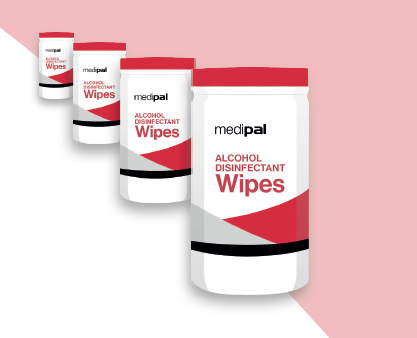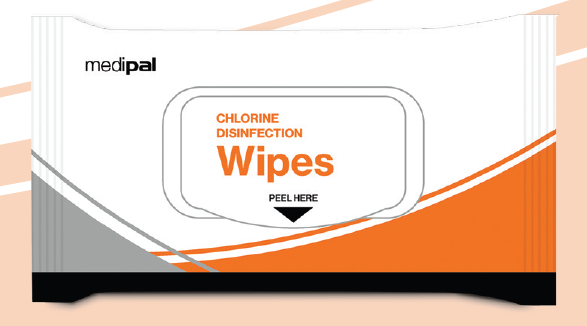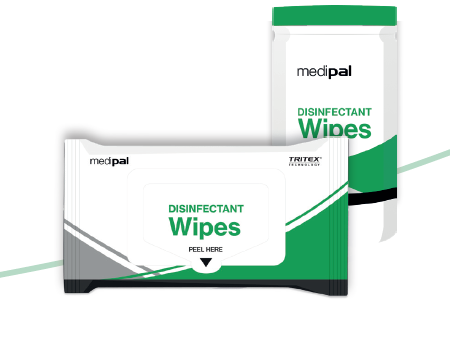Since the outbreak of coronavirus in late December, there has been a lot of misinformation. So we’ve put together this short guide to covid-19, along with links to some key sources of information.
WHAT IS COVID-19?
COVID-19 is an infectious disease caused by a newly discovered coronavirus.
Coronaviruses are a large family of viruses that cause illness, ranging from the common cold to more severe diseases such as Middle East Respiratory Syndrome (MERS-CoV) and Severe Acute Respiratory Syndrome (SARS-CoV).
COVID-19 is a new strain of coronavirus that can affect your lungs and airways. It was first identified in Wuhan, in the Hubei Province of China. Before that discovery in late 2019, it had not previously been seen in humans.
On 11th February 2020, the World Health Organisation (WHO) announced the official name of the disease. Coronavirus disease 2019 was abbreviated to COVID-19.
The CO stands for corona, VI for virus and D for disease. The outbreak was first reported in December 2019, so the 19 represents the year it emerged.
Formally, the disease was referred to as 2019 novel coronavirus or 2019-nCoV. That’s how the WHO and other health authorities referred to it before it was given it’s official name.
WHAT ARE THE SYMPTOMS OF COVID-19?
COVID-19 affects people in different ways. People have shown a wide variety of symptoms, ranging from mild to moderate through to more severe illness. Here are the three main symptoms to look out for, according to the NHS.
The main symptoms are:
- a high temperature – this means you feel hot to touch on your chest or back (you do not need to measure your temperature)
- a new, continuous cough – this means coughing a lot for more than an hour, or 3 or more coughing episodes in 24 hours (if you usually have a cough, it may be worse than usual)
- a loss or change to your sense of smell or taste – this means you’ve noticed you cannot smell or taste anything, or things smell or taste different to normal.
Fever, tiredness and a dry cough are common. But there are a variety of other symptoms that have been linked with COVID-19. Here are other symptoms listed by the WHO.
Less common symptoms:
- aches and pains.
- sore throat.
- diarrhoea.
- conjunctivitis.
- headache.
- loss of taste or smell.
- a rash on skin, or discolouration of fingers or toes.
Serious symptoms:
- difficulty breathing or shortness of breath.
- chest pain or pressure.
- loss of speech or movement.
Symptoms may appear 2-14 days after exposure to the virus. If there’s a chance you could have COVID-19, you’re advised to self-isolate. Stay at home and avoid public spaces such as work and school.
It’s important to note that you can spread the virus even if you don’t have symptoms. So get tested if you think you could have the virus, or been in contact with someone that has.

HOW TO PREVENT COVID-19?
There are various ways to prevent infection and slow the transmission of COVID-19.
We’re still learning about the virus, but we know that it’s spread primarily through droplets of saliva or discharge from the nose when an infected person coughs or sneezes. Another way might be through ‘fomites’ which is when a surface or object becomes contaminated.
Here are some things you can do to protect yourself and others:
- Self-isolation
If you have symptoms or test positive for COVID-19, the best thing to do is stay home and self-isolate. That will reduce the likelihood of you passing it on. The guidance varies between countries, but people are advised to self-isolate for a couple of weeks. See the NHS guidance on self-isolation.
- Social distancing
Avoid physical contact with anyone you do not live with. Try to stay at least 2 metres (3 steps) away from other people. Indoor gatherings carry a higher risk of transmission, so try to meet outdoors instead. Make your environment safer by avoiding the three C’s: spaces that are closed, crowded or involve close contact.
- Face coverings
Wear a face covering in enclosed spaces. It’s important to cover your nose and mouth, especially in places where it’s hard to stay away from other people. In many countries, this is now enforceable by law. Always wear one when you’re on public transport or in shared spaces like shops.
- Test and trace
If you come into contact with someone with the virus, or show symptoms, get a test to check if you have COVID-19. Track and trace systems are important for tracking local outbreaks and contacting people who may have come into contact with an infected person. Self-isolate if you test positive or are instructed to do so.
- Good hygiene
Don’t forget the basics of good hygiene. Wash your hands regularly with soap and water, or use a hand sanitiser gel. Avoid touching your face because the virus can be transmitted on contaminated surfaces. Cover your mouth and nose when coughing or sneezing. Put used tissues in the bin straight away and wash your hands.
WHERE TO FIND MORE INFORMATION?
There are a variety of places to find more details online.
You can get up-to-date information and advice on the coronavirus section of the WHO website. You’ll find news, statistics and mythbusters that are designed to fight the infodemic of misinformation found elsewhere.
There’s a COVID-19 dashboard as well as situational reports that provide regular epidemiological updates. Take a look at the interactive timeline, which allows you to track back and see the actions the WHO has taken in response to the virus.
If you’re living in or visiting the UK, please check the NHS guidance for information on the illness. Similarly, Gov.uk has advice on what to do, the risk level and recent government action on COVID-19. You can also get the latest data and charts from this section of the site.
Another useful resource is the Centres for Disease Control and Prevention (CDC). The data primarily covers the US, but the guidance is useful more broadly.
Meanwhile, researchers at Johns Hopkins University have created a COVID-19 visualisation of the spread around the world based on official numbers and confirmed cases.
WHAT ARE THE TREATMENT OPTIONS?
There is currently no specific treatment for COVID-19, but you can often ease the symptoms at home until you recover.
If you have a high temperature, it can help to get lots of rest and drink plenty of water to avoid dehydration. For coughs, it’s best to avoid lying on your back so try lying on your side or sit upright instead. If you’re feeling breathless, it can help to keep your room cool, so try turning the heating down or opening a window.
Follow the NHS guidelines on how to treat coronavirus symptoms at home.
The key thing is to self-isolate. If you or someone you live with has COVID-19, you must all stay at home. Don’t go to a pharmacy – try calling or contacting them online instead.
Stay home and self-isolate even if you only have minor symptoms, until you recover. Call your healthcare provider or hotline for advice. Have someone bring you supplies.
Feeling breathless can be a sign of a more serious coronavirus infection, but there are other signs and symptoms to watch out for. It’s important to get medical help if your symptoms get worse.
ARE THERE ANY VULNERABLE GROUPS?
COVID-19 can make anyone seriously ill, but for some people the risk is higher. People that are more clinically vulnerable include people who:
- are 70 or older
- have a lung condition that’s not severe (such as asthma, COPD, emphysema or bronchitis)
- have heart disease (such as heart failure)
- have diabetes
- have chronic kidney disease
- have liver disease (such as hepatitis)
- have a condition affecting the brain or nerves (such as Parkinson’s disease, motor neurone disease, multiple sclerosis or cerebral palsy)
- have a condition that means they have a high risk of getting infections
- are taking medicine that can affect the immune system (such as low doses of steroids)
- are very obese (a BMI of 40 or above)
- are pregnant – see advice about pregnancy and coronavirus
The risk factors above are those that are deemed to be ‘moderate risk’. But there are other groups that are considered ‘high risk’ (clinically extremely vulnerable). These people at high risk include people who:
- have had an organ transplant
- are having chemotherapy or antibody treatment for cancer, including immunotherapy
- are having an intense course of radiotherapy (radical radiotherapy) for lung cancer
- are having targeted cancer treatments that can affect the immune system (such as protein kinase inhibitors or PARP inhibitors)
- have blood or bone marrow cancer (such as leukaemia, lymphoma or myeloma)
- have had a bone marrow or stem cell transplant in the past 6 months, or are still taking immunosuppressant medicine
- have been told by a doctor they have a severe lung condition (such as cystic fibrosis, severe asthma or severe COPD)
- have a condition that means they have a very high risk of getting infections (such as SCID or sickle cell)
- are taking medicine that makes them much more likely to get infections (such as high doses of steroids or immunosuppressant medicine)
- have a serious heart condition and are pregnant
See the advice for people at higher risk of coronavirus. This includes taking extra precautions such as shielding and creating support bubbles to limit contact with other people.
WHAT PRODUCTS ARE EFFECTIVE?
Environmental cleaning in healthcare facilities or homes housing patients with suspected or confirmed COVID-19 infection should use disinfectants that are active against enveloped viruses. There are many disinfectants, including commonly used hospital disinfectants, that are active against enveloped viruses.
Currently the WHO recommendations include the use of:
- 70% Ethyl alcohol to disinfect reusable dedicated equipment (e.g., thermometers) between uses.
- Sodium hypochlorite at 0.5% (equivalent 5000ppm) for disinfection of frequently touched surfaces in homes or healthcare facilities such as our chlorine products.
WHAT SHOULD YOU BE DOING?
From a clinical perspective, there are guidelines around everyday cleaning and disinfection. The WHO has best practice recommendations for infection prevention and control for health care workers caring for patients with suspected or confirmed COVID-19.
At Medipal, our expert microbiology team can help with the real world interpretation of these guidelines, detailing the products and processes needed to conform to this WHO and NHS guidance.
In the event of severe acute respiratory infection when COVID-19 is suspected, the WHO has also produced these clinical management guidelines.
WHEN WILL A COVID-19 VACCINE BE READY?
We’re now in the midst of a global pandemic and researchers around the world are racing to develop a vaccine that’s effective against COVID-19.
There are more than 170 candidate vaccines being tracked by the WHO, each at different stages of development. When a safe and effective vaccine is found, COVAX will facilitate the equitable access and distribution of these vaccines to protect people in all countries. People most at risk will be prioritised.
Vaccines usually take years of testing and additional time to produce at scale, but scientists are hoping to develop a COVID-19 vaccine within 12 to 18 months. Some are already in the human trial phase.
You can find more information on immunisation and vaccines on the WHO website. Also here’s a link to the Covid vaccine tracker by the Guardian, which shows where the candidate vaccines are within the different phases of clinical trials.
DOWNLOAD OUT COVID-19 INFOGRAPHIC
During these extraordinary times, it’s important that we all pull together. Here’s a little reassurance on what we’re doing to combat the threat of COVID-19.
Our priority is to ensure the health and safety of everyone working tirelessly at Pal International. Because of them we’re able to help those on the frontline of this fight.
Hopefully you’ve found this guide to COVID-19 useful and informative. Click the download link below to get your copy of the full infographic.





